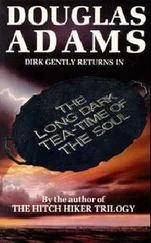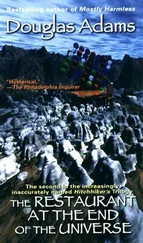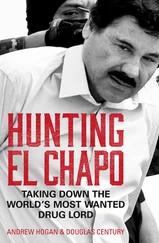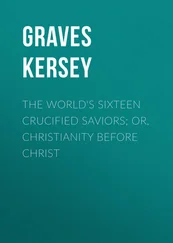The history of Orthodoxy is long and complicated, but it can be roughly divided into four 500‐year periods. The first of these periods (up to the year 500) represents the prehistory of the movement, a time when the roots of the Orthodox Church were developing. The years from 500 to 1000 are the “formative age,” when Orthodoxy coalesced into its own separate and distinct tradition. This period can also be called the Early Byzantine Era because most of the key events took place in connection with the beginning of the Byzantine Empire. The Late Byzantine Era (1000–1500) was a time of political decline, but also of theological advancement. Finally, the fourth era, starting around 1500 and continuing up to the present, can be called the “national church” period, when most of the current state–church structures of Orthodoxy came into existence.

Figure 1.4 Interior of small Orthodox church (Paphos, Cyprus).
Photo by author.
Prehistory: beginnings to 500
The deep roots of the Orthodox tradition extend back to the earliest Greek‐speaking Christian communities within the ancient Roman Empire. The Roman Empire was bilingual, with Greek spoken by most people in the eastern half of the empire and Latin spoken in the west. Words and languages package reality, and thereby shape the way people see the world. Greek‐speaking Christians were more prone to think philosophically and abstractly about matters of faith, while Latin‐speaking Christianity (which would eventually become the Catholic tradition) was generally more concrete and legalistic. To some degree the contours of this distinction remain in place even today.
But while the deep roots of the Orthodox tradition can be traced to the earliest years of the Christian movement in the Roman Empire, it makes little sense to speak about a distinctly Orthodox tradition during these years. The Christian movement as a whole was just getting started, and many different and sometimes contradictory impulses were being expressed. It was only after the year 325, when the first ecumenical (general or universal) council of Christian leaders was held in the city of Nicaea (in the northwest corner of modern Turkey), that the earliest framework for the Orthodox tradition began to coalesce. Three more ecumenical councils would be held before the year 500, culminating in the Council of Chalcedon (451). These four councils produced the foundational principles that form the common base for both the Roman Catholic and Eastern Orthodox traditions. The last of these councils also triggered the separation of the Eastern and Oriental Orthodox churches.
The formative (or early Byzantine) age: 500 to 1000
The Byzantine Empire is the name given to the Eastern half of the Roman Empire (roughly equivalent to modern Greece and Turkey) after the empire lost political control of the Western Mediterranean Sea. This name change is also associated with the transition of the Eastern Roman Empire into a solely Greek‐speaking state, which took place during the first half of this five‐hundred‐year period. This is also when the Catholic and Orthodox Churches – the Latin‐speaking and the Greek‐speaking Christian churches of the old Roman Empire – began to drift apart, slowly taking on their own separate and distinctive identities. The reasons for this drift are complex, including political and cultural developments as well as emerging theological differences, but by the year 1000 it was clear that Orthodox and Catholic Christians were developing separate and distinct understandings of who they were in matters of faith. As if to mark this fact, the so‐called “Great Schism” that took place in the year 1054 (an event that involved the papal condemnation of the Patriarch of Constantinople and the Patriarch’s responsive denunciation of the Pope) is often cited as the formal point of separation between the two churches.
Eastern Orthodoxy’s distinctive identity was forged in this era, and the Iconoclastic Controversy was a key event. This dispute took place during the 700s and the 800s and focused on whether icons should be allowed in the churches or whether they should be banned as idolatrous. The iconophiles (lovers of icons) eventually won this contest, defeating the iconoclasts (opponents of icons). Icons have played a central role in Orthodox life and spirituality ever since. While the Second Council of Nicaea, held in 787, settled this issue theologically, the final victory of the iconophile movement (often referred to as the Triumph of Orthodoxy) did not take place until 843, when the Byzantine Empress Theodora called a new synod of bishops into existence to reaffirm the Second Council of Nicaea and threw the full weight of the government behind the Council’s decision (see Voices of World Christianity 1.2).
The Orthodox tradition faced another challenge during this period that deepened and solidified its identity: the rise of Islam. Heretofore, Orthodox Christianity had defined itself by explaining how it superseded earlier forms of religion, how it corrected and improved both Roman paganism and Judaism. But Islam was a new religion that saw itself as the successor of Judaism and Christianity . The initial reaction of Orthodoxy was to treat Islam as if it was a Christian heresy, hoping it would soon disappear. Rather than disappearing, however, Islam became stronger, and it soon took control of much of the territory where Orthodoxy had previously flourished. This Muslim conquest of the Middle East changed the church’s organizational structure. Before the conquest, the four Patriarchs of the great cities of Constantinople, Antioch, Alexandria, and Jerusalem had shared leadership of the tradition. After the conquest, the Patriarch of Constantinople began to exercise greater authority because he was the only Patriarch not living under Muslim rule.
The late Byzantine period: 1000 to 1500
The late Byzantine period began on an upswing. The world of Orthodoxy was expanding northward as a result of the conversion of Russia, and the Orthodox Byzantine Empire seemed poised to reconquer much of the territory that had been lost to Islam. Under Basil II, who ruled from 976 to 1025, the Byzantine Empire made impressive gains in the East, in what is now Syria and northern Iraq, but then the tide changed. The Byzantine army suffered a huge defeat at the hands of the Seljuk Turks in the famous Battle of Manzikert (1071) in what is now eastern Turkey. That defeat marked the beginning of a long, slow decline in both the Byzantine Empire and its Orthodox Church.
Voices of World Christianity 1.2 Empress Theodora I and the Triumph of Orthodoxy
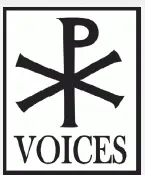 Theodora I(815–67) was the wife of the Byzantine Emperor Theophilos. When Theophilos died in 842, she became regent (temporary ruler) for her son Michael, who was still an infant. Empress Theodora governed Byzantium for thirteen years (until she was deposed by her brother Bardas in 855), and her reign changed Eastern Orthodoxy forever. Her husband Theophilos had been an iconoclast , but Theodora was an iconophile and one of her very first acts as empress was to assemble a synod of Orthodox bishops to reaffirm the use of icons in Christian worship and personal devotion. This declaration signaled the final end of the Iconoclastic Controversy. In the Orthodox Church calendar this event, known as the “Triumph of Orthodoxy,” is celebrated every year on the first Sunday in Lent (or “Great Lent” as it is called in the Orthodox tradition). The following reading is excerpted from the concluding report of Empress Theodora’s synod. It describes how the “winter” of iconoclastic rule ended, calls for the annual celebration of the iconophile victory, and declares iconoclasm to be “anathema” (damned) forevermore.
Theodora I(815–67) was the wife of the Byzantine Emperor Theophilos. When Theophilos died in 842, she became regent (temporary ruler) for her son Michael, who was still an infant. Empress Theodora governed Byzantium for thirteen years (until she was deposed by her brother Bardas in 855), and her reign changed Eastern Orthodoxy forever. Her husband Theophilos had been an iconoclast , but Theodora was an iconophile and one of her very first acts as empress was to assemble a synod of Orthodox bishops to reaffirm the use of icons in Christian worship and personal devotion. This declaration signaled the final end of the Iconoclastic Controversy. In the Orthodox Church calendar this event, known as the “Triumph of Orthodoxy,” is celebrated every year on the first Sunday in Lent (or “Great Lent” as it is called in the Orthodox tradition). The following reading is excerpted from the concluding report of Empress Theodora’s synod. It describes how the “winter” of iconoclastic rule ended, calls for the annual celebration of the iconophile victory, and declares iconoclasm to be “anathema” (damned) forevermore.
Читать дальше
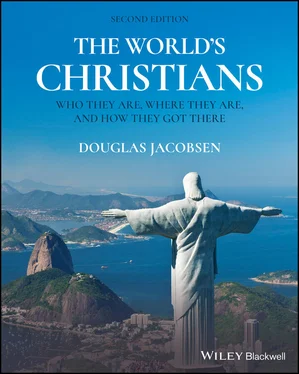

 Theodora I(815–67) was the wife of the Byzantine Emperor Theophilos. When Theophilos died in 842, she became regent (temporary ruler) for her son Michael, who was still an infant. Empress Theodora governed Byzantium for thirteen years (until she was deposed by her brother Bardas in 855), and her reign changed Eastern Orthodoxy forever. Her husband Theophilos had been an iconoclast , but Theodora was an iconophile and one of her very first acts as empress was to assemble a synod of Orthodox bishops to reaffirm the use of icons in Christian worship and personal devotion. This declaration signaled the final end of the Iconoclastic Controversy. In the Orthodox Church calendar this event, known as the “Triumph of Orthodoxy,” is celebrated every year on the first Sunday in Lent (or “Great Lent” as it is called in the Orthodox tradition). The following reading is excerpted from the concluding report of Empress Theodora’s synod. It describes how the “winter” of iconoclastic rule ended, calls for the annual celebration of the iconophile victory, and declares iconoclasm to be “anathema” (damned) forevermore.
Theodora I(815–67) was the wife of the Byzantine Emperor Theophilos. When Theophilos died in 842, she became regent (temporary ruler) for her son Michael, who was still an infant. Empress Theodora governed Byzantium for thirteen years (until she was deposed by her brother Bardas in 855), and her reign changed Eastern Orthodoxy forever. Her husband Theophilos had been an iconoclast , but Theodora was an iconophile and one of her very first acts as empress was to assemble a synod of Orthodox bishops to reaffirm the use of icons in Christian worship and personal devotion. This declaration signaled the final end of the Iconoclastic Controversy. In the Orthodox Church calendar this event, known as the “Triumph of Orthodoxy,” is celebrated every year on the first Sunday in Lent (or “Great Lent” as it is called in the Orthodox tradition). The following reading is excerpted from the concluding report of Empress Theodora’s synod. It describes how the “winter” of iconoclastic rule ended, calls for the annual celebration of the iconophile victory, and declares iconoclasm to be “anathema” (damned) forevermore.